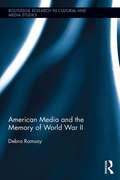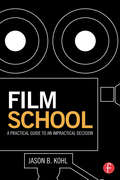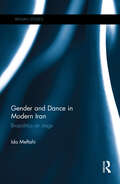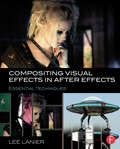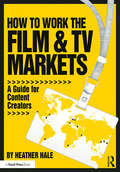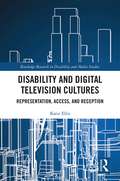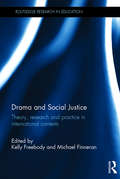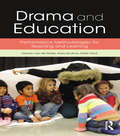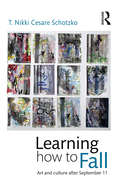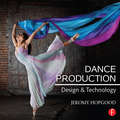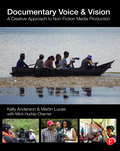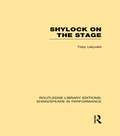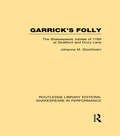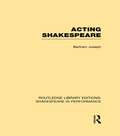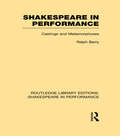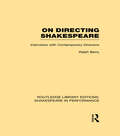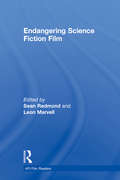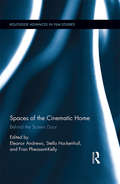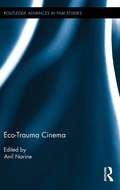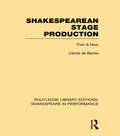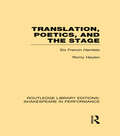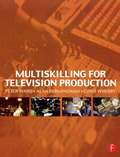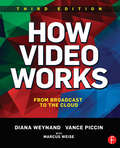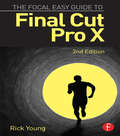- Table View
- List View
American Media and the Memory of World War II (Routledge Research in Cultural and Media Studies)
by Debra RamsayFor three generations of Americans, World War II has been a touchstone for the understanding of conflict and of America’s role in global affairs. But if World War II helped shape the perception of war for Americans, American media in turn shape the understanding and memory of World War II. Concentrating on key popular films, television series, and digital games from the last two decades, this book explores the critical influence World War II continues to exert on a generation of Americans born over thirty years after the conflict ended. It explains how the war was configured in the media of the wartime generation and how it came to be repurposed by their progeny, the Baby Boomers. In doing so, it identifies the framework underpinning the mediation of World War II memory in the current generation’s media and develops a model that provides insight into the strategies of representation that shape the American perspective of war in general.
Film School: A Practical Guide to an Impractical Decision
by Jason B. KohlDevelop the tools you will need to succeed before, during, and after your film school education. Film School: A Practical Guide to an Impractical Decision is a specific, straightforward guide to applying, getting into, and thriving in film school and in the industry in general. Not only does this book appeal to both prospective and current film students, it also features an in depth discussion of the application process, both from the graduate and undergraduate perspectives. You will learn how to choose between different schools and programs, avoid debt, succeed at festivals, and transition out of film school and into the work world. Author Jason Kohl offers: Tips on how to develop your voice before attending film school A chronological layout that allows you to continually refer to the book throughout your film school process Advice on how to gauge the cost of attending film school Whether you are a recent film school graduate, or just starting the application process, Film School gives important advice and insider knowledge that will help you learn and grow in the film industry. Film School is a must-have for anyone who wants to know what it takes to succeed in film school and beyond.
Film School: A Practical Guide to an Impractical Decision
by Jason B. KohlDevelop the tools you will need to succeed before, during, and after your film school education. Film School: A Practical Guide to an Impractical Decision is a specific, straightforward guide to applying, getting into, and thriving in film school and in the industry in general. Not only does this book appeal to both prospective and current film students, it also features an in depth discussion of the application process, both from the graduate and undergraduate perspectives. You will learn how to choose between different schools and programs, avoid debt, succeed at festivals, and transition out of film school and into the work world. Author Jason Kohl offers: Tips on how to develop your voice before attending film school A chronological layout that allows you to continually refer to the book throughout your film school process Advice on how to gauge the cost of attending film school Whether you are a recent film school graduate, or just starting the application process, Film School gives important advice and insider knowledge that will help you learn and grow in the film industry. Film School is a must-have for anyone who wants to know what it takes to succeed in film school and beyond.
Gender and Dance in Modern Iran: Biopolitics on stage (Iranian Studies)
by Ida MeftahiGender and Dance in Modern Iran: Biopolitics on Stage investigates the ways dancing bodies have been providing evidence for competing representations of modernity, urbanism, and religiosity across the twentieth century. Focusing on the transformation of the staged dancing body, its space of performance, and spectatorial cultural ideology, this book traces the dancing body in multiple milieus of performance, including the Pahlavi era’s national artistic scene and the popular café and cabaret stages, as well as the commercial cinematic screen and the post-revolutionary Islamized theatrical stage. It links the socio-political discourses on performance with the staged public dancer, in order to interrogate the formation of dominant categories of "modern," "high," and "artistic," and the subsequent "othering" of cultural realms that were discursively peripheralized from the "national" stage. Through the study of archival and ethnographic research as well as a diverse literature pertaining to music, theater, cinema, and popular culture, it combines a close reading of primary sources such as official documents, press materials, and program notes with visual analysis of filmic materials and imageries, as well as interviews with practitioners. It offers an original and informed exploration into the ways performing bodies and their public have been associated with binary notions of vice and virtue, morality and immorality, commitment and degeneration, chastity and eroticism, and veiled-ness and nakedness. Engaging with a range of methodological and historiographical methods, including postcolonial, performance, and feminist studies, this book is a valuable resource for students and scholars of Middle East history and Iranian studies, as well as gender studies and dance and performance studies.
Compositing Visual Effects in After Effects: Essential Techniques
by Lee LanierCreate vibrant visual effects with Adobe After Effects. Gain the tips, tricks, and applied knowledge you need to carry out essential visual effects tasks and bring your digital compositing to the next level. In Compositing Visual Effects in After Effects, industry veteran Lee Lanier covers all the common After Effects techniques any serious visual effects artist needs to know, combining the latest, professionally-vetted studio practices and workflows with multi-chapter projects and hands-on lessons. Engaging, full-color tutorials cover: Altering resolutions and frame rates Channel and color space manipulation Rotoscoping and masking Matchmoving and motion tracking Keying green screen Working in the 3D environment and integrating 3D render passes Particle simulation Color grading and distressing Expressions and project management The companion website (www.focalpress.com/cw/lanier) features video image sequences, 3D renders, matte paintings, and other tutorial materials, allowing you to immediately apply the techniques taught in the book.
How to Work the Film & TV Markets: A Guide for Content Creators
by Heather HaleHow to Work the Film & TV Markets takes independent filmmakers, television and digital content creators on a virtual tour of the entertainment industry’s trade shows — the circulatory system of the entire global media landscape. This book highlights the most significant annual events around the world, details a dossier of all the players that frequent them and examines all the elements that drive the market value and profitability of entertainment properties. In-the-trenches insights from our modern, real-world marketplace are contextualized into immediately implementable practical advice. Make the most of your finite investments of funds, time and creative energy to optimize your odds for success within the mainstream, business-to-business circuit but learn how to select, apply and scale prudent, proven principles to drive your own Do-It-Yourself/Direct-to-the-Consuming-Crowd fundraising, distribution and promotional success. Heather Hale demystifies these markets, making them less intimidating, less confusing and less overwhelming. She shows you how to navigate these events, making them far more accessible, productive — and fun! This creative guide offers: An in-depth survey of the most significant film, TV and digital content trade shows around the world; An overview of the co-production market circuit that offers financing and development support to independent producers; An outline of the market-like festivals and key awards shows; A breakdown of who’s who at all these events — and how to network with them; Hot Tips on how to prepare for, execute and follow up on these prime opportunities; Low-budget key art samples and game plans; A social media speed tour with a wealth of audience engagement ideas. Visit the book’s space on www.HeatherHale.com for additional resources and up-to-date information on all these events.
Disability and Digital Television Cultures: Representation, Access, and Reception (Routledge Research in Disability and Media Studies)
by Katie EllisDisability and Digital Television Cultures offers an important addition to scholarly studies at the intersection of disability and media, examining disability in the context of digital television access, representation and reception. Television, as a central medium of communication, has marginalized people with disability through both representation on screen and the lack of accessibility to this medium. With accessibility options becoming available as television is switched to digital transmissions, audience research into television representations must include a corresponding consideration of access. This book provides a comprehensive and critical study of the way people with disability access and watch digital TV. International case studies and media reports are complimented by findings of a user-focused study into accessibility and representation captured during the Australian digital television switchover in 2013-2014. This book will provide a reliable, independent guide to fundamental shifts in media access while also offering insight from the disability community. It will be essential reading for researchers working on disability and media, as well as television, communications and culture; upper-level undergraduate and postgraduate students in cultural studies; along with general readers with an interest in disability and digital culture.
Drama and Social Justice: Theory, research and practice in international contexts (Routledge Research in Education)
by Kelly Freebody Michael Finneran"This text offers a cohesive framework for exploring social justice through drama and drama from a social justice perspective. Research based examples of practice from a range of international contexts link theory and practice. Connecting chapters raise key critical questions in an engaging dialogue format. An important addition to the literature on social justice education." - Lee Anne Bell, author Storytelling for Social Justice (2010) and co-editor of Teaching for Diversity and Social Justice (Routledge, 2007) Much has been written within the tradition of drama education and applied theatre around the premise that drama can be a force for change within both individual lives and society more broadly. However, little has been published in terms of charting the nature of this relationship. By combining theoretical, historical and practical perspectives, this book unpacks and explores drama’s intrinsically entwined relationship with society more comprehensively and critically.Chapters gather together and develop a range of theoretical understandings of social justice in applied drama in the first part of the book, which are then used to frame and inform more focused discussions of drama research and practice in the second. Contributors move beyond practical understandings of drama for empowerment or development in order to engage with the philosophy of praxis – the interconnected and symbiotic nature of theory derived from practice, and practice derived from theory. Including concrete examples from current research and practice in the field, the book opens up a conversation on and counter-narrative to perceptions of the nature and impact of applied theatre and drama education on social justice.Drama and Social Justice will be key reading for postgraduate students, academics, researchers and field-based practitioners in the areas of applied drama and theatre, education and youth work, and social justice and the social sciences.
Drama and Education: Performance Methodologies for Teaching and Learning
by Manon van de Water Mary McAvoy Kristin HuntDrama and Education provides a practical, comprehensive guide to drama as a tool for teaching and learning. It is among the first practical drama and performance textbooks that address brain-based, neuroscientific research, making the argument that creativity is necessary in our lives, that embodied learning is natural and essential, and that contextual learning helps us find our place in society in relationship to other peoples and cultures. As well as a historical and theoretical overview of the field, it provides rationale and techniques for several specific methodologies:?linear drama, process-oriented drama, drama for social justice, and performance art. Each approach is supplemented with sample lesson plans, activities, ideas for differentiation, and extensive bibliographies. The topics are discussed from five key angles: ? • Historical and theoretical foundations • Curricular applications • Practical toolkits for a range of classrooms and learning environments • Different strategies for lesson plans • Extension options for longer workshops. ? Alongside these core methods, the integration of other innovative forms—from performance art to Theatre of the Oppressed—into drama-based learning is explored, as well as the pragmatic concerns such as assessment, planning, and advocacy for arts learning and arts education partnerships. ? Drama and Education is the comprehensive textbook for teachers and students on Applied Theatre and Theatre and Education courses. ?
Learning How to Fall: Art and Culture after September 11
by T Nikki Cesare SchotzkoBeginning with Richard Drew’s controversial photograph of a man falling from the North Tower of the World Trade Center on September 11, Learning How to Fall investigates the changing relationship between world events and their subsequent documentation, asking: Does the mediatization of the event overwhelm the fact of the event itself? How does the mode by which information is disseminated alter the way in which we perceive such information? How does this impact upon our memory of an event? T. Nikki Cesare Schotzko posits contemporary art and performance as not only a stylized re-envisioning of daily life but, inversely, as a viable means by which one might experience and process real-world political and social events. This approach combines two concurrent and contradictory trends in aesthetics, narrative, and dramaturgy: the dramatization of real-world events so as to broaden the commercial appeal of those events in both mainstream and alternative media, and the establishment of a more holistic relationship between politically and aesthetically motivated modes of disseminating and processing information. By presenting engaging and diverse case studies from both the art world and popular culture – including Aliza Shvarts’s censored senior thesis at Yale University, Kerry Skarbakka’s provocative photographs of falling, Didier Morelli’s crawl through Toronto, and Aaron Sorkin’s The Newsroom – Learning How to Fall creates a new understanding of the relationship between the event and its documentation, where even the truth of an event might be called into question.
Dance Production: Design and Technology
by Jeromy HopgoodDance Production: Design and Technology introduces you to the skills you need to plan, design, and execute the technical aspects of a dance production. While it may not seem that staging a dance production is that different from a play or musical, in reality a dance performance offers up unique intricacies and challenges all its own, from scenery that accommodates choreography, to lighting design that sculpts the body, and costumes that complement movement. This unique book approaches the process of staging a dance production from a balanced perspective, making it an essential resource for dancers and designers alike. Covering a broad range of topics, author Jeromy Hopgood takes the reader through the process of producing dance from start to finish – including pre-production planning (collaboration, production process, personnel, performance spaces), design disciplines (lighting, sound, scenery, costumes, projections), stage management, and more. Bridging the gap between theatrical and dance design, the book includes a quick reference guide for theatrical and dance terminology, useful in giving dancers and designers a common working vocabulary that will ensure productive communication across the different fields.
Documentary Voice & Vision: A Creative Approach to Non-Fiction Media Production
by Kelly Anderson Martin LucasLearn the creative and technical essentials of documentary filmmaking with Documentary Voice & Vision. This comprehensive work combines clear, up-to-date technical information, production techniques and gear descriptions with an understanding of how technical choices can create meaning and serve a director’s creative vision. Drawing on the authors’ years of experience as documentary filmmakers, and on interviews with a range of working professionals in the field, the book offers concrete and thoughtful guidance through all stages of production, from finding and researching ideas to production, editing and distribution. Documentary Voice & Vision will help students and aspiring filmmakers think though research and story structure, ethics, legal issues and aesthetics, as well as techniques from camera handling to lighting, sound recording and editing. The book explores a full range of production styles, from expository to impressionistic to observational, and provides an overview of contemporary distribution options. Documentary Voice & Vision is a companion text to Mick Hurbis-Cherrier’s Voice & Vision: A Creative Approach to Narrative Film and DV Production, and employs a similar style and approach to that classic text. This text is written from the perspective of documentary filmmakers, and includes myriad examples from the world of non-fiction filmmaking. A robust companion website featuring additional resources and interactive figures accompanies the book.
Shylock on the Stage (Routledge Library Editions: Shakespeare in Performance)
by Toby LelyveldOriginally published in 1961, this book is a study of the ways actors since the time of Shakespeare have portrayed the character of Shylock. A pioneering work in the study of performance history as well as in the portrayal of Jews in English literature. Specifically it studies Charles Macklin, Edmund Kean, Edwin Booth, Henry Irving and more recent performers.
Garrick's Folly: The Shakespeare Jubilee of 1769 at Stratford and Drury Lane (Routledge Library Editions: Shakespeare in Performance)
by Johanne M. StochholmThe great Shakespeare Jubilee festival was held at Stratford, under the direction of David Garrick. The occasion was the dedication of the new town hall and the presentation by Garrick of a statue of Shakespeare. Immense interest, enthusiasm, and controversy were aroused by the plans, which involved not only theatrical and rhetorical festivities but fireworks, processions and a horserace. This book was originally published in 1964 to coincide with the 400th anniversary of Shakespeare’s birth. It describes the festival, which touched heights of success and depths of disaster, its impact on Stratford, its after effects in London, especially theatrical London, where rival managers tried to cash in on Garrick’s idea and where Garrick turned the Stratford failure into resounding success at Drury Lane. The author quotes entertainingly from newspapers, memoirs, and plays, and illustrates her book with contemporary engravings and portraits.
Acting Shakespeare (Routledge Library Editions: Shakespeare in Performance)
by Bertram Leon JosephHow did the actors for whom Shakespeare wrote his plays make his characters come to life, how did they convey his words? Can modern directors, actors, and even library readers of Shakespeare learn from them? Creating character and making the Elizabethan playwright’s poetry compelling for the audience is a problem which has seldom been resolved in modern times. This book demonstrates the hard course a modern actor must follow to make real and truthful the words he speaks, and the action and emotion underlying them. With examples and simple exercises, this book helps with the preparation for the great task – providing the actor with a combination that unlocks the Bard's English. Starting with how theatrical speech was understood in Renaissance England, it looks at figures of speech, the powers of persuasion, and the passion and rhythm inherent in the language.
Shakespeare in Performance: Castings and Metamorphoses (Routledge Library Editions: Shakespeare in Performance)
by Ralph BerryThese studies take stage history as a means of knowing the play. Half of the studies deal with casting - doubling, chorus and the crowd, the star of Hamlet and Measure for Measure. Then the transformations of dramatis personae are analyzed and The Tempest is viewed through the changing relationships of Prospero, Ariel and Caliban. Some of Shakespeare’s most original strategies for audience control are studied, such as Cordelia's asides in King Lear, Richard II’s subversive laughter and the scenic alternation of pleasure and duty in Henry IV. Performance is the realization of identity. The book draws on major productions up to 1992, just before the book was originally published.
On Directing Shakespeare (Routledge Library Editions: Shakespeare in Performance)
by Ralph BerryFor producers and directors planning a production, several questions inevitably arise: Which play is appropriate for the contemporary audience? Should the text and setting be altered? Twelve leading contemporary directors answer these questions in interviews in this book and shed light on what Shakespeare means to them and to their audiences. Originally published in 1977.
Endangering Science Fiction Film (AFI Film Readers)
by Sean Redmond Leon MarvellEndangering Science Fiction Film explores the ways in which science fiction film is a dangerous and endangering genre. The collection argues that science fiction's cinematic power rests in its ability to imagine ‘Other’ worlds that challenge and disturb the lived conditions of the ‘real’ world, as it is presently known to us. From classic films such as 2001: A Space Odyssey and Solaris to modern blockbusters including World War Z and Gravity, and directors from David Cronenberg to Alfonso Cuarón, contributors comment on the way science fiction film engages with dangerous encounters, liminal experiences, sublime aesthetics, and untethers space and time to question the very nature of human existence. With the analysis of a diverse range of films from Europe, Asia, North and South America, Endangering Science Fiction Film offers a uniquely interdisciplinary view of the evolving and dangerous sentiments and sensibility of this genre.
Spaces of the Cinematic Home: Behind the Screen Door (Routledge Advances in Film Studies #42)
by Stella Hockenhull Eleanor Andrews Fran Pheasant-KellyThis book examines the ways in which the house appears in films and the modes by which it moves beyond being merely a backdrop for action. Specifically, it explores the ways that domestic spaces carry inherent connotations that filmmakers exploit to enhance meanings and pleasures within film. Rather than simply examining the representation of the house as national symbol, auteur trait, or in terms of genre, contributors study various rooms in the domestic sphere from an assortment of time periods and from a diversity of national cinemas—from interior spaces in ancient Rome to the Chinese kitchen, from the animated house to the metaphor of the armchair in film noir.
Eco-Trauma Cinema (Routledge Advances in Film Studies)
by Anil NarineFilm has taken a powerful position alongside the global environmental movement, from didactic documentaries to the fantasy pleasures of commercial franchises. This book investigates in particular film’s complex role in representing ecological traumas. Eco-trauma cinema represents the harm we, as humans, inflict upon our natural surroundings, or the injuries we sustain from nature in its unforgiving iterations. The term encompasses both circumstances because these seemingly distinct instances of ecological harm are often related, and even symbiotic: the traumas we perpetuate in an ecosystem through pollution and unsustainable resource management inevitably return to harm us. Contributors to this volume engage with eco-trauma cinema in its three general forms: accounts of people who are traumatized by the natural world, narratives that represent people or social processes which traumatize the environment or its species, and stories that depict the aftermath of ecological catastrophe. The films they examine represent a central challenge of our age: to overcome our disavowal of environmental crises, to reflect on the unsavoury forces reshaping the planet's ecosystems, and to restructure the mechanisms responsible for the state of the earth.
Shakespearean Stage Production: Then and Now (Routledge Library Editions: Shakespeare in Performance #3)
by Cécile De BankeAn absorbing and original addition to Shakespeareana, this handbook of production is for all lovers of Shakespeare whether producer, player, scholar or spectator. In four sections, Staging, Actors and Acting, Costume, Music and Dance, it traces Shakespearean production from Elizabethan times to the 1950s when the book was originally published. This book suggests that Shakespeare should be performed today on the type of stage for which his plays were written. It analyses the development of the Elizabethan stage, from crude inn-yard performances to the building and use of the famous Globe. Since the Globe saw the enactment of some of the Bard’s greatest dramas, its construction, properties, stage devices, and sound effects are reviewed in detail with suggestions on how a producer can create the same effects on a modern or reconstructed Elizabethan stage. Shakespeare’s plays were written to fit particular groups of actors. The book gives descriptions of the men who formed the acting companies of Elizabethan London and of the actors of Shakespeare’s own company, giving insights into the training and acting that Shakespeare advocated. With full descriptions and pages of reproductions, the costume section shows the types of dress necessary for each play, along with accessories and trimmings. A table of Elizabethan fabrics and colours is included. The final section explores the little-known and interesting story of the integral part of music and dance in Shakespeare’s works. Scene by scene the section discusses appropriate music or song for each play and supplies substitute ideas for Elizabethan instruments. Various dances are described – among them the pavan, gailliard, canary and courante. This book is an invaluable wealth of research, with extensive bibliographies and extra information.
Translation, Poetics, and the Stage: Six French Hamlets (Routledge Library Editions: Shakespeare in Performance)
by Romy HeylenThis book establishes an analytical model for the description of existing translations in their historical context within a framework suggested by systemic concepts of literature. It argues against mainstream 20th-century translation theory and, by proposing a socio-cultural model of translation, takes into account how a translation functions in the receiving culture. The case studies of successive translations of "Hamlet" in France from the eighteenth century neoclassical version of Jean-Francois Ducis to the 20th-century Lacanian, post-structuralist stage production of Daniel Mesguich show the translator at work. Each chapter focuses on a different aspect of the changing theatrical and literary norms to which translators through the ages have been bound by the expectations both of their audiences and the literary establishment.
Multiskilling for Television Production
by Peter Ward Alan Bermingham Chris WherryWritten by television trainers who run their own courses on Multiskilling, this book offers a comprehensive introduction to the broad range of skills and technical knowledge required in this industry. It details all the essential information you need to know, acting as an on-the-job reference source for everyday use. For many broadcasting technicians, one of the biggest challenges in recent years has been the transition from a career working in a solo core skill such as camerawork or audio, to acquiring the experience and expertise of a range of production jobs. Many people are expected to work in a number of crafts and to equip themselves with a much wider range of television techniques than had been customary in the past.Multiskilling has become an integral part of television culture, requiring that new entrants are competent in several specialist production skills. Multiskilling for Television Production concentrates on the techniques associated with news and magazine programme production, where most tecnhical operators are usually employed, but most techniques are shared across the whole spectrum of television and film making.Anyone baffled by the range and scope of skills to be mastered will find this book invaluable.
How Video Works: From Broadcast to the Cloud
by Diana Weynand Vance PiccinHow Video Works raises the curtain on how video is created, scanned, transmitted, stored, compressed, encoded, delivered and streamed to its multitude of destinations. In today's digital world, every content creator--individual as well as network or corporation--must understand the process of how video works in order to deliver not only the best quality video, but a digital video file with the most appropriate specifications for each particular use. This complete guide covers key stages of video development, from image capture to the final stages of delivery and archiving, as well as workflows and new technologies, including Ultra High Definition, metadata, signal monitoring, streaming and managing video files - all presented in an easy to understand way. Whether you are a professional or new video technician discovering the ins and outs of digital distribution, this book has the information you need to succeed. The updated third edition contains: * New sections on image capture as well as streaming and video workflows * A hands-on approach to using digital scopes and monitoring the video signal * Thorough explanations of managing video files, including codecs and wrappers * In-depth coverage of compression, encoding, and metadata * A complete explanation of video and audio standards, including Ultra HD * An overview of video recording and storage formats * A complete glossary of terms for video, audio and broadcast
The Focal Easy Guide to Final Cut Pro X
by Rick YoungMaster invaluable workflow tips that will allow you to tap into the full power of Final Cut Pro X and achieve results quickly, regardless of your skill level. Rick Young’s Focal Easy Guide to Final Cut Pro X, Second Edition is the ultimate mentor for getting up and running with Apple’s professional editing software. In this step-by-step, full-color guide, Young clearly explains the key concepts and vital knowledge you need to edit your project from start to finish, providing clear, time-saving instruction on producing and outputting using Final Cut Pro X. This new edition has been updated to include: A thorough introduction to Final Cut Pro X and the philosophy by which the software works Coverage of the complete postproduction process, including setup, importing, editing, audio, effects, and output Additional sections on Multicam Editing, working with Proxies, and effective media management of Libraries Instruction on encoding, distributing, and archiving your completed projects A companion website (www.focalpress.com/9781138785533) featuring downloadable video footage that you can edit using the techniques covered in the book Packed with tutorials and real-world examples, The Focal Easy Guide to Final Cut Pro X, Second Edition will take you through the ins and outs of the software and have you editing and outputting your movies in no time! Written for Final Cut Pro X version 10.1.3 and beyond.
